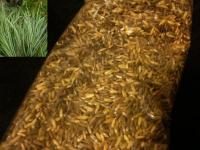It is widely grown as an ornamental tree, often planted in parks and large gardens for its drooping foliage. General cultivation is limited to areas with mild winters, with trees frequently killed by temperatures below about -25 °C, limiting it to hardiness zones 7 and warmer for reliable growth. The most cold-tolerant trees originate in the northwest of the species' range in Kashmir and Paktia Province, Afghanistan. Selected cultivars from this region are hardy to zone 7 or even zone 6, tolerating temperatures down to about -30 °C. Named cultivars from this region include 'Eisregen', 'Eiswinter', 'Karl Fuchs', 'Kashmir', 'Polar Winter', and 'Shalimar'. Of these, 'Eisregen', 'Eiswinter', 'Karl Fuchs', and 'Polar Winter' were selected in Germany from seed collected in Paktia; 'Kashmir' was a selection of the nursery trade, whereas 'Shalimar' originated from seeds collected in 1964 from Shalimar Gardens, Pakistan (in the Kashmir region) and propagated at the Arnold Arboretum. This plant has gained the Royal Horticultural Society's Award of Garden Merit .
The use of C. deodara in Pakistani and Indian Ayurvedic medicines is well recorded. The inner wood is aromatic and used to make incense. Inner wood is distilled into essential oil. As insects avoid this tree, the essential oil is used as insect repellent on the feet of horses, cattle and camels. It also has anti-fungal properties and has some potential for control of fungal deterioration of spices during storage. The outer bark and stem are astringent.
Due to its anti fungal and insect repellent properties rooms made of Deodar wood are used to store meat and food grains like oats and wheat in Shimla, Kullu and Kinnaur district of Himachal Pradesh. In Himachal people suffering from Asthma or other respiratory problems are advised to sit under a Deodartree early in the morning.
Cedar oil is often used for its aromatic properties, especially in aromatherapy. It has a characteristic woody odour which may change somewhat in the course of drying out. The crude oils are often yellowish or darker in colour. Its applications cover soap perfumes, household sprays, floor polishes and insecticides and is also used in microscope work as a clearing oil.

Item is shipped out within 3 business days.
Exchanges are accepted but not returns.


































